Stage 3: Highline179, Zugspitze, and Garmisch-Partenkirchen
With stories of royal intrigue behind us, we started our day with the Burgenwelt Ehrenberg and Highline179.
Burgenwelt Ehrenberg is a complex of castles and fortifications in the valley and on the mountains above. The complex dates back many hundreds of years ago and was a major defensive facility as well as a toll and customs site. The main facility in the valley has restored/rebuilt period buildings depicting the times of the knights who lived here. There are many hiking routes one can take to reach the mountain sites, or you can take the cable car. We chose a 2km long, middle difficulty hiking route and set our sights on the bridge.

Highline179, aka, “view with a thrill” is a 400m long suspension bridge spanning highway 179 and the valley below and connects Ehrenberg castle on one mountain with Fort Claudia on the other side of valley. Kathrin had been mentally preparing herself for this event for the previous 36 hours. Part of her really wanted to do this, the other part was petrified at the thought of it. Now here she was, face to face with the bridge, and I’m happy to say she made it across without problems. The one thing she couldn’t do is stop in the middle of the bridge to find a geocache. That was my task. After a few minutes of searching I found it attached to one of the supporting frames.
Ehrenberg castle (built in 1296) is the bigger of the two and is an impressive sight from the bridge and from the other mountain. Fort Claudia (built in 1639) is much smaller in comparison. The whole route took us about two hours to complete and made for an enjoyable morning. Once back in the valley we enjoyed a lunch at a restaurant in the park facilities.
Our next stop was the Zugspitze, the highest mountain in Germany, but because of the bad weather we didn’t take the cable car to the summit, which was hidden within some stormy clouds. It will have to wait for another visit. Nevertheless, the mountain makes for an impressive site from the bottom.
We continued on to Garmisch-Partenkirchen, and arrived at our B&B around midafternoon. After settling into our room, we rode our folding bikes around town to get ourselves acquainted. It is a quaint Bavarian town, with the classic wooden balconies adorned with flowers, and painted murals on the walls. By early evening our stomachs were telling us it was dinner time. Riding by a small middle eastern restaurant, we noticed some enticing dishes at one table and, after perusing the menu, decided to stay. While considering what to order, we noticed that the family at the table next to ours had a tasty looking dish, so we struck up a conversation and asked them what it was called. The man gave us the name and then offered us a taste, a very nice gesture, but we declined. We chose a tasty sounding dish to share and added some flatbread with a sauce dribbled over it. Afterwards, we agreed that the food was ok, not quite as impressive as it looked. Later, just as we arrived at the hotel, I realized my backpack was not on my back. Ugh, so I had to return to the restaurant. On the bright side, it was only a six minutes ride with Kathrin’s electrified Brompton.
Thursday I woke up early and drove across town (a 10 minute drive) to get a sunrise shot of the Zugspitze. This view is in an open area directly behind the Edel Weiss American Resort area. When we arrived in town yesterday, we made a quick stop to have a look at it, but we were turned away by the security guard, who kept repeating, “Private Property!” This time I found parking on the street and kept my distance. Once I was satisfied with the photos I got, I returned to the hotel for breakfast.
We planned a day of hiking today, starting with the Partnachklam, a gorge with a beautiful river the color of green fluorite. Our B&B was close enough that we could walk to it. Along the way we passed by the sky jumping facilities and stopped to find a geocache that paid tribute to Eddie the Eagle, the famous British Olympic ski jumper. In spite of coming in dead last in his two events, he held the British ski jumping record for 13 years. Continuing our walk, we eventually met up with the river and followed it to the gorge. With the sound of rushing water in our ears we approached the visitor area and saw lines marked on the pavement helping visitors to maintain a safe distance while lining up for tickets. Since we were here during off-peak season, there was no line so we walked right up to the ticket booth, once again thankful that we avoided a long wait. The river cuts a thin, serpentine route through the mountain and around every turn one is rewarded with magnificent views. I was looking forward to the photo opportunities and so I took my time walking through the gorge, appreciating the emptiness of the place – we encountered only 3-4 other couples.
After taking in as much of the scenery as we could stand, we rode a cable car down to Garmisch, which delivered us back at the ski jump facilities. Originally built for the 1936 Olympic winter games, the style is showing its age. Bas relief Romanesque figures stand at each side of the entrances in a show of German strength. It is still in use as a training center today. After a relaxing stroll through the edge of town and along the river, we returned to our hotel room for a shower and a bit of rest.
Later, we took our folding bikes out for some geocaching before dinner. While biking through a lovely part of town my bike suddenly made a noise. I looked down and saw something hanging from the frame. It was the derailer, the screw holding it in place fell off! This is not what I expect from a Brompton. I could have paid a lot less for parts to fall off a bike! With this unexpected end to our tour, Kathrin rode back to the hotel to retrieve the car and come to my rescue. Once she returned and we packed the bike, it was time for dinner. The one good thing about this whole fiasco is that my bike broke down between two restaurants, one of which was open. We didn’t have a terribly big appetite so we chose a simple Käsespätzle and a local beer. After a relaxing meal, we returned to our chamber.
Stage 4: Linderhof, Kuhflucht Waterfalls
The weather forecast for Friday proved to be correct, rain the entire day, and it would continue through the next few days. This wasn’t vacation weather so we came up with Plan B: Return to Munich. Weather be damned, we weren’t leaving the area without visiting Linderhof, Ludwig II’s favorite residence. Maximilian (Ludwig’s father) built a hunting lodge on this property and would take Ludwig here during the summers. Once Ludwig inherited the crown, he made plans to replace the lodge with a palace. The result is a majestic, opulent residence modelled after his idol, King Louis XIV’s, Versailles palace. Each time our group entered a room, oooh’s and aaahhh’s echoed off the walls.
Once back outside, we walked to the Venus Grotto, but unfortunately it was closed for renovation. Instead, we had to settle for a video that gave a VR fly-through and described the history, and renovation efforts. It looked like it would be an interesting place to visit.
We also took the time to walk around the grounds and were rewarded with some nice views of the palace. On the way out we stopped at a pavilion called the Moroccan House. It was built for the World Exhibition in 1873 in Vienna, and purchased in 1878 for Ludwig II, who had it lavishly and decoratively furnished in the Moroccan style. The house, which was originally located in Austria, has several rooms in which the king often lived for short periods. In the central room, which resembles an inner courtyard, the light enters from above through panes of colored glass arranged in the shape of a pyramid.
Bidding adieu to Linderhof, we continued on to the Kuhflucht waterfalls, just a 45-minute drive away. The route went via Ettal. Kathrin mentioned that it is famous for its monastery so we decided to check it out. The building complex includes a restaurant, hotel, high school, gift store, and of course a brewery. We enjoyed a typical Bavarian meal at their restaurant then walked across the street to take in the spiritual sights. Ettal monastery was remarkable, more so than Andechs. The basilica looked more like a cathedral than a church. After a leisurely stroll through the grounds we had a look in the gift store to look for their liquid spirits. The 33 monks in residence not only brew the beer, they also sell it, although not at a charitable price. I couldn’t resist to purchase some and will rate it against the Andechs beer. It will be an interesting test*.
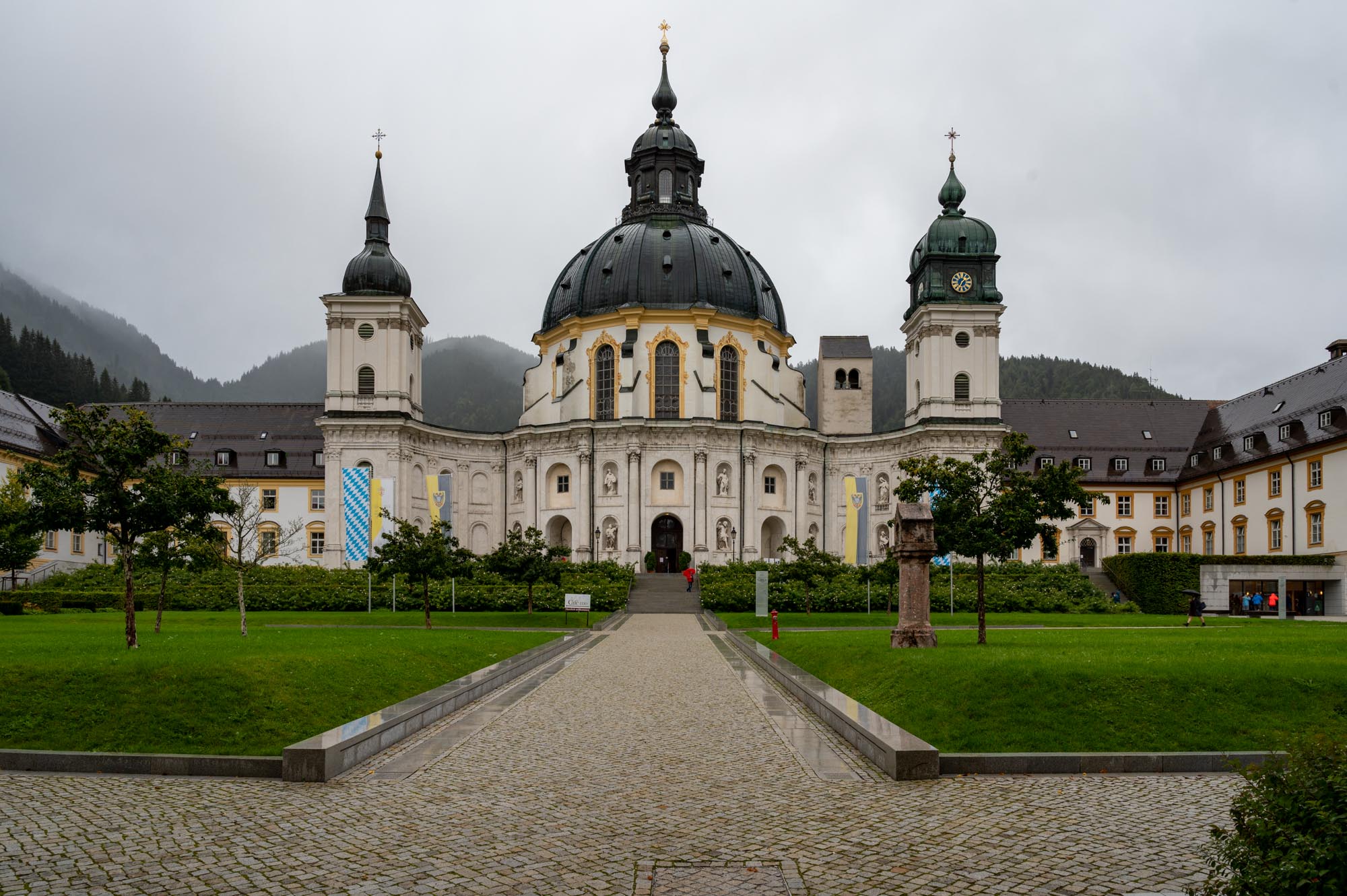
Having done all there is to do in Ettal, we proceeded to the waterfalls. The river was very full, which made for an impressive water show. There are various falls along a 3km route, and they were all dramatic. The rainy weather not only provided good lighting for photographs, but also kept most visitors away. This is a great place to perfect your waterfall photography technique! I will be coming back here for a dedicated photography trip.
There is a geocache that is roughly a kilometer hike beyond the last viewing point. The route up is a challenging, vertical march above the waterfalls. Kathrin wanted it, so I took on the challenge. 30 minutes later, she called me and asked if I might be on my way back. I told her I was only halfway there. Rather than continue to sit in the cold and rain, she returned to the car.
About 10 minutes later, the rain changed to snow at my elevation, but I kept on. The trail became more difficult. In several places, the trees on either side formed a weaving of roots that was extremely slippery. Sometimes I was climbing hand over hand, but finally I made it to the area of the cache and commenced searching. After a 15-minute hunt in the snow, fatigued from the hike up, I decided that one more find isn’t worth this much misery so I gave up and headed down the mountain. The trek was just as long and even more challenging. Going downhill over the wet tree roots was more treacherous on the descent, where gravity relentlessly pulled me down. After quite some time, I finally arrived at the car, soaking wet and exhausted.
Stage 5: Deutsches Museum and Dachau
At around 5pm we arrived at our hotel in Munich, a Holiday Inn. After a full day in cold and rain, we wanted nothing more than to take a hot shower and enjoy the leftovers of a previous day’s picnic lunch in the room.
Saturday, 26 September we spent in the Deutsches Museum. During our weekend in Munich we decided to leave it for another time when the weather was cold and wet. Well, that day came sooner than we had imagined! Established in 1903, it has grown to become one of the most famous museums for Science and Technology in Europe, with 6 floors of exhibits. We visited the physics, steam engines, power machines, astronomy, cosmology, technical toys, and musical instruments halls. The museum had a bunch of hands-on exhibits, which I liked a lot. I also always enjoy displays of steam engines and clocks. The ingenuity that went into developing these basic tools is, for me, fascinating. One can easily spend an entire day here, we know because we did.
On Sunday we began our drive home. Our last target was the Dachau Concentration Camp, the most somber experience of our trip. We joined a group tour and our guide, Martina, was excellent. She is a German woman with a Jewish background. Her great uncle fled Germany during the war, emigrated to America, and joined the US army. His unit was subsequently shipped to Germany to fight. Martina’s stories from her great uncle added a personal touch to the tour. She also had some fascinating stories and insights from her research, such as the brothel the Nazis set up for the prisoners. She gives the impression that she is a devoted student to Dachau’s history.
The Nazis sent not only Jews to the concentration camps. They also arrested priests, homosexuals, criminals, political opponents, and “asocials”. Prisoners of war were also part of the concentration camp population, although the SS executed them as quickly as possible. Dachau was not an extermination camp, rather a prisoner camp. The SS killed only a small fraction of the captives in the gas chamber there, and that was mostly to test the equipment and the process. The tour lasted close to 2 hours. To see firsthand where the prisoners were kept, hearing about the living conditions, and inhumane treatment, was heartbreaking.
Before the drive home we wanted to have lunch in Dachau. But after a frustrating search without success, we found ourselves heading out of Dachau and towards the Autobahn. The threat of going on empty stomachs loomed large, but then Kathrin googled for a place and found a small village Guesthouse restaurant nearby. It wasn’t the most inviting place but it was our last chance, so we took it. It may not have been the ideal goodbye meal we would have liked but it filled the emptiness of our bellies and we made the 4-hour drive home.

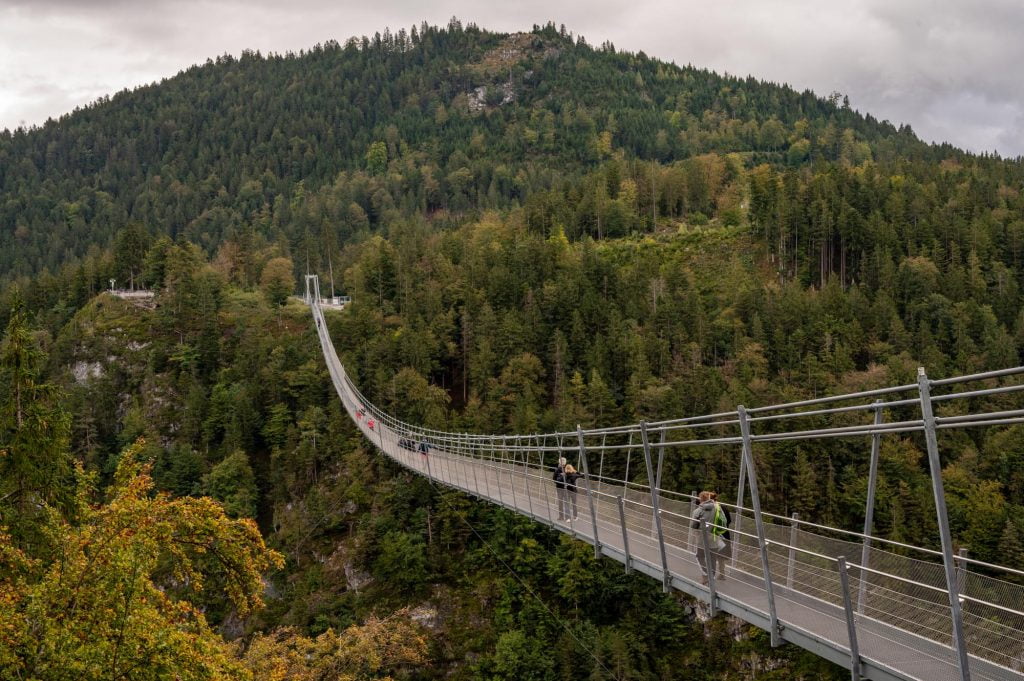




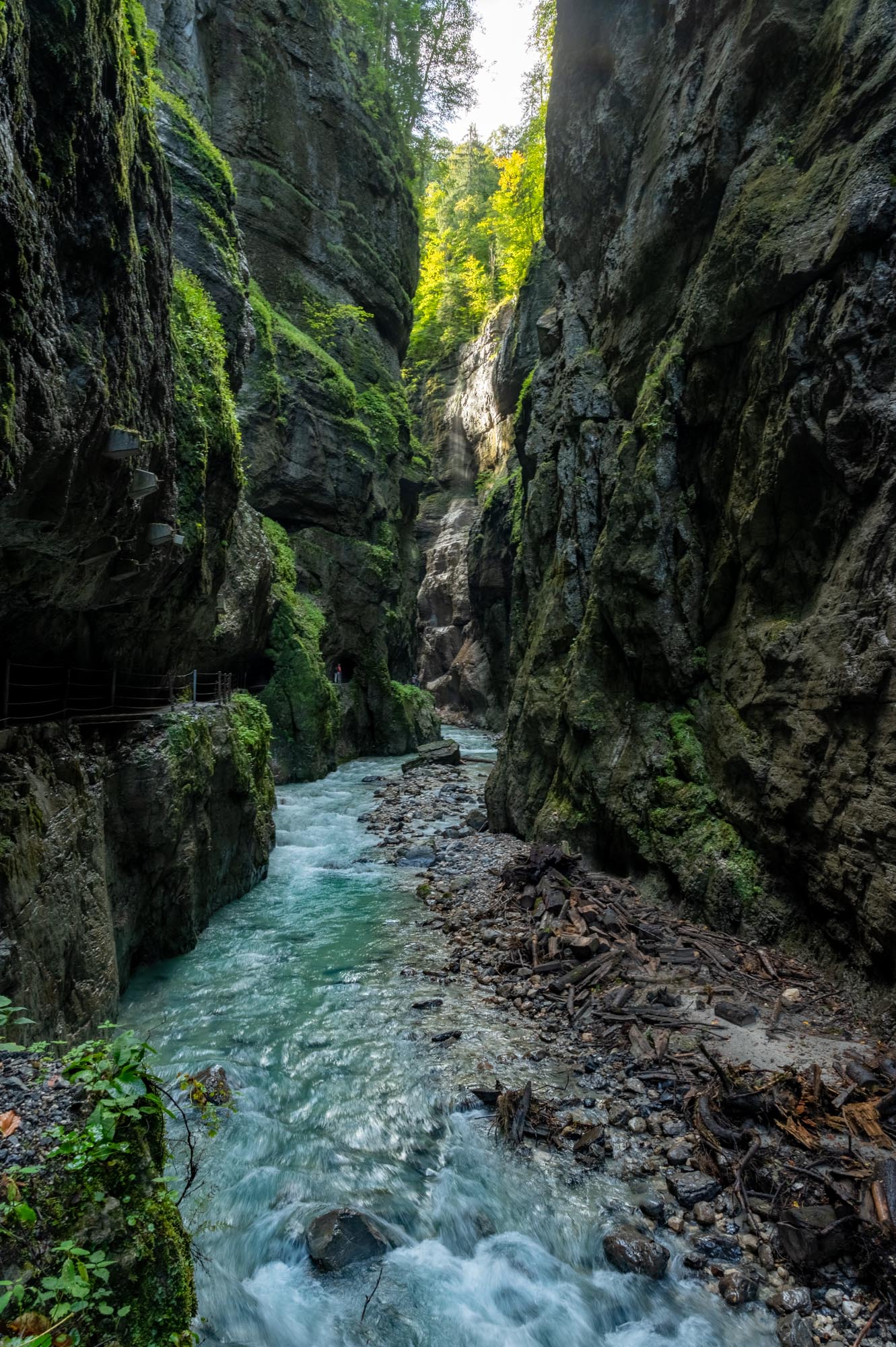












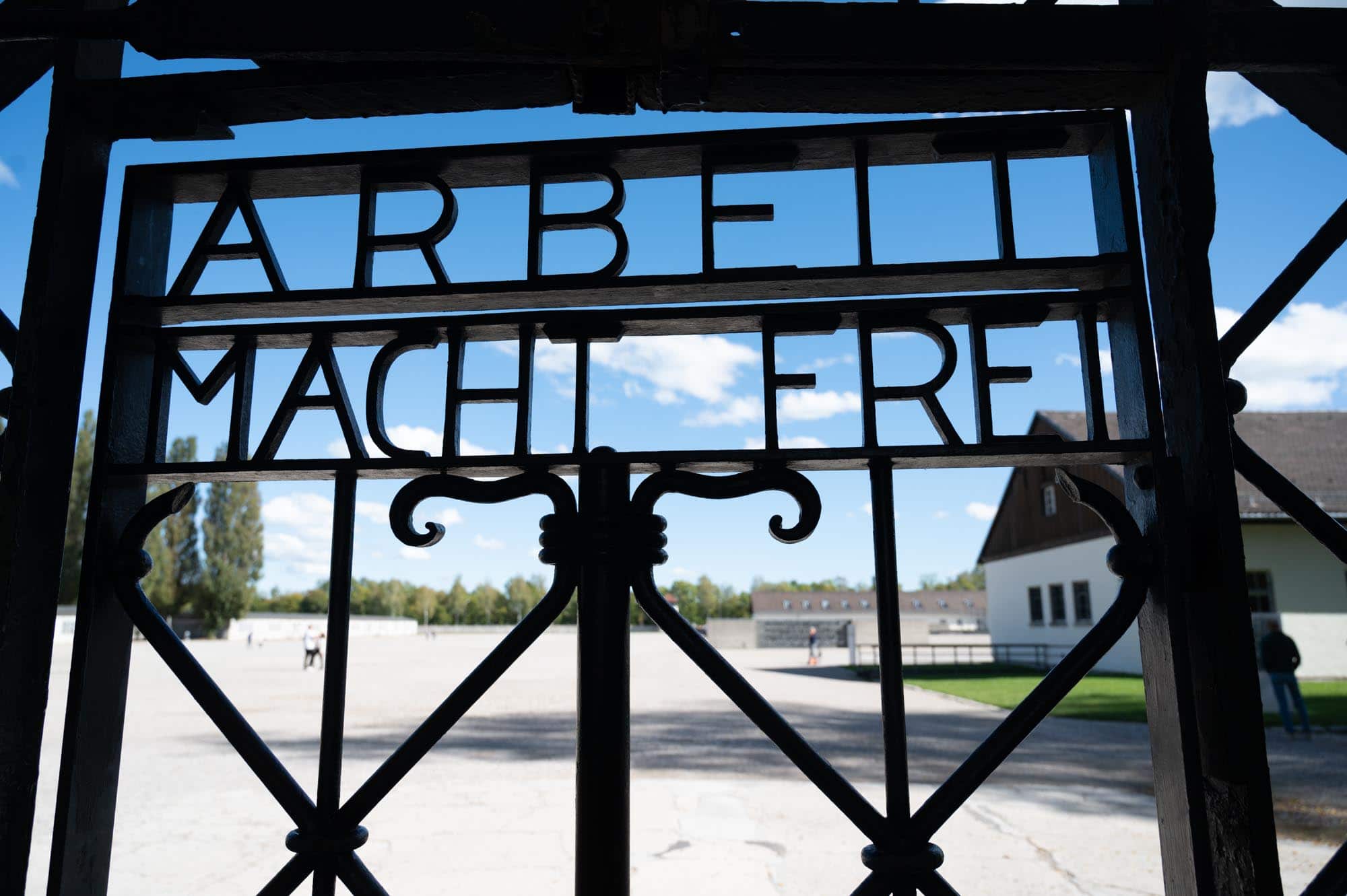

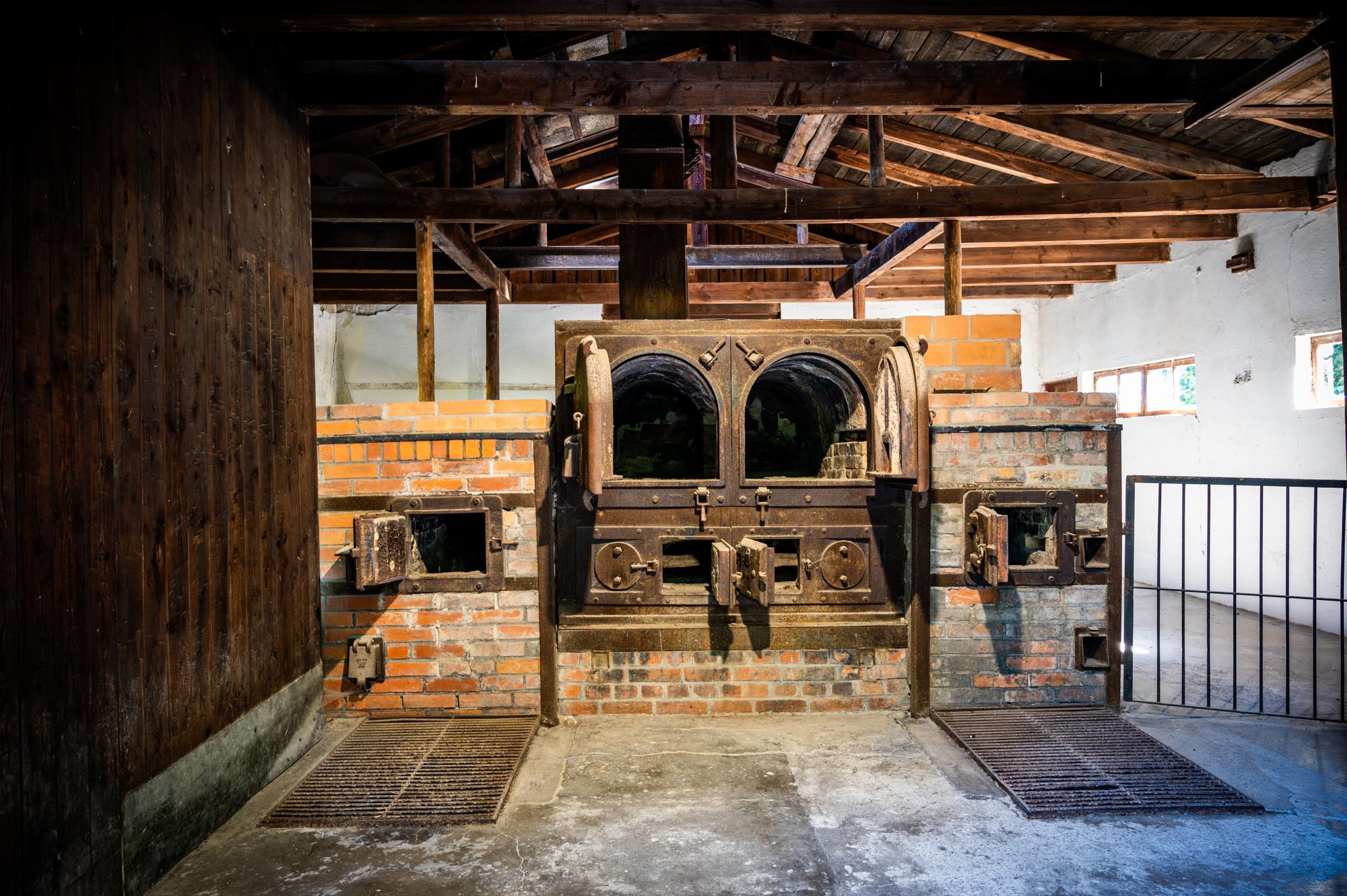

Leave a Reply